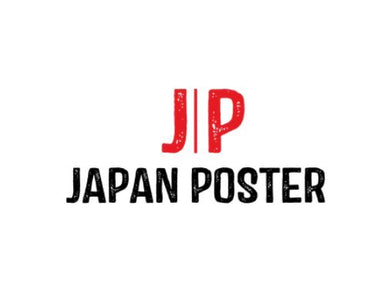Authenticity
✅ 100% Authentic Japanese Posters — Guaranteed
At Japan Poster Shop, we do not sell reproductions, reprints, or fakes.
Every poster you see on our site is a genuine, original Japanese release, carefully sourced and authenticated.
🇯🇵 Straight from Japan — to Your Doorstep
We specialize in vintage Japanese movie posters and contemporary graphic art prints, including ultra-rare releases by artists like Tadanori Yokoo. All of our posters are sourced from across the four main islands of Japan through a trusted network of:
-
Long-established second-hand book and poster stores
-
Multigenerational collectors
-
Gallery owners and dealers
-
Private Japanese estates
This close-knit and reputable supply chain—rooted in Japan’s culture of honesty, trust, and perfectionism—is what sets us apart.
📜 Certificate of Authenticity (COA)
Every purchase includes an official Certificate of Authenticity bearing our:
-
JITSU-IN Hanko (Official Seal)
-
Director’s Signature Hanko
-
Poster details: release year, title, country of origin, format, and inventory ID
The jitsu-in is a registered, legally recognized seal in Japan—traditionally used to sign contracts and notarize important documents. This is your physical proof of authenticity.
🪪 Licensed & Compliant: Kobutsu License Holder
We are fully licensed under Japanese law with a Kobutsusho Kyoka (Second-Hand Dealer’s License), legally required for the sale of antiques and vintage goods in Japan.
This license ensures all our posters are ethically sourced and free of theft or forgery, with seller identity tracked by the Japanese police.
🔍 How We Authenticate Posters
With over 10,000 original posters handled, we've developed one of the industry’s most robust quality-control processes. Here are the key markers of a genuine Japanese vintage poster:
-
Age Marks: Vintage posters typically show light signs of age—fold lines, soft creases, slight edge wear, or storage impressions.
-
Paper Quality: Originals are printed on distinct Japanese paper stock—not glossy or overly thick like reproductions. Most vintage Japanese posters have a matte or softly fibrous finish.
-
Ink Quality: Older posters used analog offset or silkscreen methods, with saturated, uneven ink layering that differs from digital prints.
-
Folding: Most Japanese B2 posters were machine-folded into thirds by the distributor. If a poster is perfectly flat or rolled and lacks fold lines, it may be a reproduction.
-
Back Tone: The reverse side of originals should not be bright white or glossy. It should appear aged or slightly toned.
-
Smell Test: Yes, it sounds strange—but vintage posters have a distinctive scent of aged paper that reprints lack.
-
Eirin Markings: Look for the Eirin number, typically printed or stamped in the corner. A “42” prefix, for example, denotes Showa 42 (i.e. 1967).
💬 Any Questions?
Our team is here to assist with authentication inquiries, collection advice, or poster history.
Whether you're a seasoned collector or a first-time buyer, we're committed to earning your trust.
📩 Contact us here or message us on Instagram @japanpostershop or Facebook.


